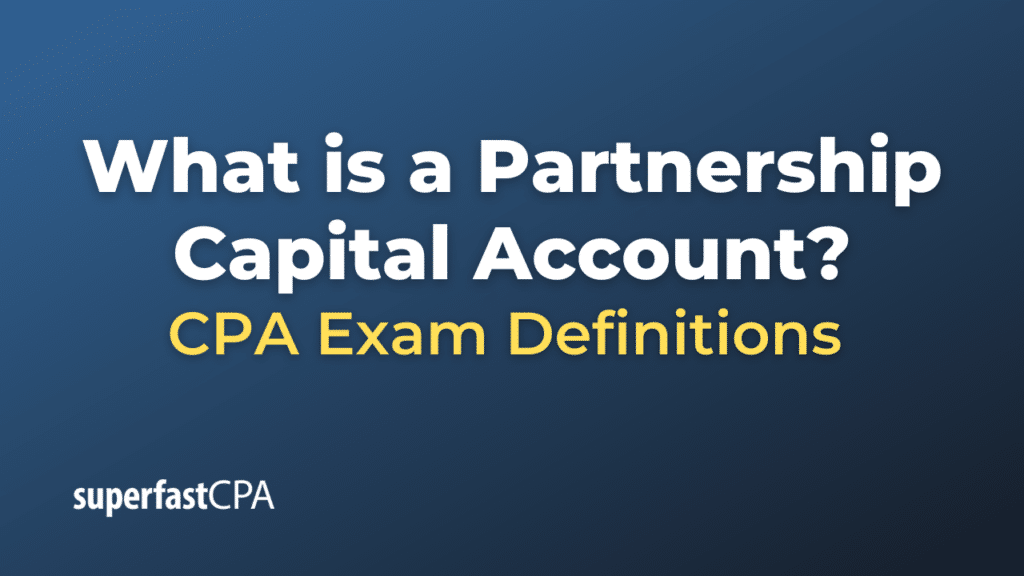Partnership Capital Account
A Partnership Capital Account is a ledger account in a partnership firm that represents the individual partner’s equity in the partnership. It is essentially the account that tracks each partner’s investment in the business, their share of profits or losses, any withdrawals they make, and any additional contributions they put into the business.
The capital account balance can increase through:
- Initial investment by the partner into the business.
- Share of the partnership’s profits allocated to the partner.
- Any additional capital contributions made by the partner.
The capital account balance can decrease through:
- Share of the partnership’s losses allocated to the partner.
- Withdrawals made by the partner, which may include taking out profits or return of capital.
The ending balance of a partner’s capital account represents that partner’s current equity in the partnership. The partnership agreement typically sets forth how profits, losses, and distributions will be allocated to the partners’ capital accounts.
For example, if Anna and Bella are partners in a business and they each invest $50,000, their respective capital accounts would each start with $50,000. If the business makes a profit of $20,000 in its first year, and the partnership agreement calls for profits to be split equally, then $10,000 would be added to each partner’s capital account, bringing the balances to $60,000 each. If Bella then decides to withdraw $5,000, her capital account would decrease to $55,000.
Example of a Partnership Capital Account
Let’s consider a hypothetical partnership firm, AB Partnership, formed by two partners, Anna and Bella. Let’s assume that their partnership agreement states that they share profits and losses equally. Here’s how their individual capital accounts might look:
Anna’s Capital Account:
- Beginning Balance: Anna invests $50,000 into the partnership at the beginning. So, her capital account starts with a balance of $50,000.
- Profit Share: The partnership earns a net profit of $30,000 in the first year. As per their agreement, profits are divided equally, so Anna’s share of the profit is $15,000. This amount is added to her capital account, increasing the balance to $65,000.
- Withdrawals: Anna decides to withdraw $5,000 from her capital account. This withdrawal reduces her capital account balance to $60,000.
Bella’s Capital Account:
- Beginning Balance: Bella also invests $50,000 into the partnership at the beginning. So, her capital account starts with a balance of $50,000.
- Profit Share: Bella’s share of the net profit of $30,000 is also $15,000. This amount is added to her capital account, increasing the balance to $65,000.
- Additional Capital Contribution: Bella decides to invest an additional $10,000 into the partnership. This additional capital contribution increases her capital account balance to $75,000.
So, by the end of the first year, Anna’s capital account balance would be $60,000, and Bella’s capital account balance would be $75,000. These balances represent their respective equities in the AB Partnership at the end of the year.














